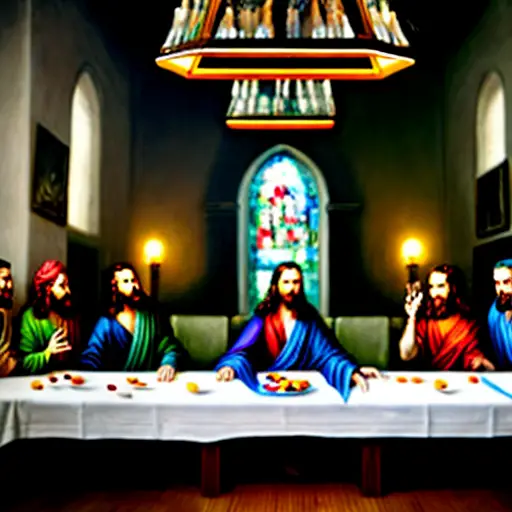Picture this: it's the 18th century in France, and the art scene is buzzing with creativity and extravagance. Amidst all the powdered wigs and frilly dresses, a certain style emerges, captivating the hearts of the French elite. But who, you may ask, is the mastermind behind this whimsical movement known as French Rococo? Well, let's take a journey back in time, shall we? While it's tempting to credit a single individual as the founder, the truth is that the origins of French Rococo are as intricate as the delicate brushstrokes themselves. Influences from the flamboyant Baroque period, the elegance of the Italian Renaissance, and even the playful motifs of Chinese art all played a part in shaping this enchanting style. So, instead of pointing fingers at a single artist, let's raise our quills to the collective genius that birthed the French Rococo movement, for it takes a village to create such an exquisitely ornate and delightfully frivolous art form.
The founder of the French Rococo style of painting is often attributed to Jean-Antoine Watteau, a renowned artist of the 18th century. However, an interesting fact is that Watteau himself never used the term 'Rococo' to describe his work. The term was actually coined by art critics and historians much later to categorize the style that emerged during his time. Watteau's delicate brushwork, pastel colors, and portrayal of aristocratic leisure activities became the epitome of the Rococo style, which eventually spread throughout Europe.
Step aside, art enthusiasts, because François Boucher is about to steal the spotlight! When it comes to French Rococo painting, this guy is the crème de la crème. With his delicate brushwork and penchant for depicting scenes of love, beauty, and all things extravagant, Boucher quickly rose to become the leading figure of this whimsical style. His mastery of pastel colors and his ability to capture the essence of frivolity and sensuality made him the go-to artist for the French elite. So, while we may not have a single founder of the French Rococo style, we can certainly crown François Boucher as its reigning king, ruling over a world of elegance, charm, and a touch of cheeky humor.

When it comes to the origins of the French Rococo style, one name that cannot be overlooked is Jean-Antoine Watteau. Often hailed as the founder of this enchanting movement, Watteau's influence on the art world cannot be overstated. His ability to capture fleeting moments of beauty and his skillful use of color and light set the stage for what would become the epitome of Rococo painting.
Watteau's works, such as 'Pilgrimage to Cythera' and 'The Embarkation for Cythera,' showcased his signature style of delicate brushwork, soft pastel hues, and dreamlike scenes. His paintings were a departure from the grandeur and seriousness of the Baroque era, instead focusing on the pleasures of life, love, and leisure. Watteau's ability to infuse his works with a sense of playfulness and romance laid the foundation for the Rococo movement to flourish.
Not only did Watteau's artistic style pave the way for Rococo, but his subject matter also played a significant role in shaping the movement. His depictions of elegant aristocrats engaged in leisurely activities, such as picnics, masquerades, and theatrical performances, became iconic motifs of the Rococo period. Watteau's ability to capture the essence of pleasure-seeking and the pursuit of beauty resonated with the French elite, who eagerly embraced this new artistic direction.
Watteau's influence extended beyond his own paintings, as he inspired a generation of artists who would go on to become key figures in the Rococo movement. His emphasis on capturing the fleeting moments of life, his attention to detail, and his ability to create a sense of enchantment all became hallmarks of Rococo painting. So, while the French Rococo style may not have a single founder, it is undeniable that Jean-Antoine Watteau's contributions were instrumental in shaping and defining this whimsical and indulgent artistic movement.
The founder of the French Rococo style of painting is often considered to be Antoine Watteau, who was known for his delicate brushwork and his ability to capture the essence of fleeting moments. However, it is interesting to note that Watteau himself disliked the term 'Rococo' and preferred to describe his style as 'fêtes galantes,' which referred to his elegant and playful scenes of aristocratic leisure.
The question of who can truly be considered the founder of the French Rococo style of painting is one that sparks heated debates among art historians. While many attribute this honor to Jean-Antoine Watteau, others argue that François Boucher deserves equal recognition. Watteau's delicate brushwork and his ability to capture fleeting moments of beauty set the stage for Rococo, while Boucher's mastery of pastel colors and his depictions of sensuality and frivolity embodied the essence of the movement. Both artists played pivotal roles in shaping the Rococo style, and their contributions cannot be overlooked. So, instead of engaging in a never-ending debate, let's celebrate the collective genius of Watteau and Boucher, for it is their combined influence that truly paved the way for the enchanting world of French Rococo painting.